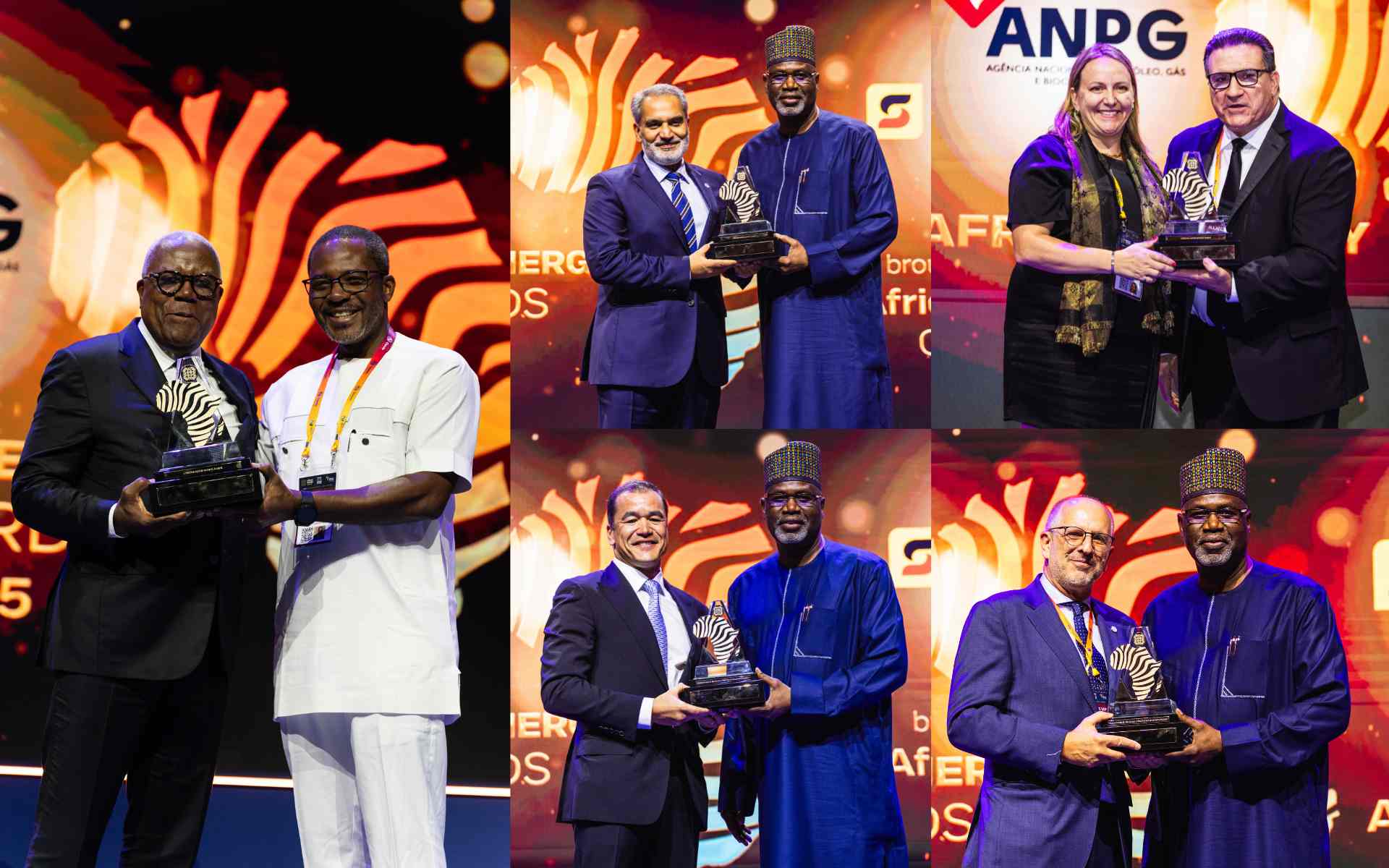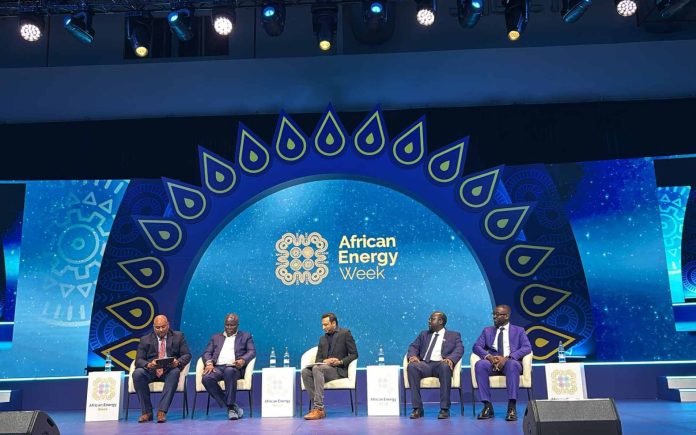African Energy Week in Cape Town is set to close today after five days of dealmaking, policy debate and protest have collided around a single, urgent question, who will shape Africa’s energy future and on what terms? The summit’s program is familiar in structure but revealing in substance. It is staging a continent that is simultaneously courting capital for both hydrocarbon and renewable projects, experimenting with market architectures to attract private investment for power, and confronting a more insistent climate movement that demands accountability and local benefit.
Those tensions are visible in the numbers and on the streets; nearly 7,000 delegates are attending at the Cape Town International Convention Centre to pitch projects, strike accords and negotiate frameworks; Premier Invest’s Deal Room has presented project opportunities valued at roughly $13.4 billion; and outside the venue activists from Greenpeace and allied groups are staging high-profile actions to demand that oil and gas companies pay for harm they say their operations have inflicted across Africa.
Read also:
Inside the halls, the conversation returns again and again to bankability. Policy makers and project developers repeatedly make the same practical point: regulatory reform alone will not attract the volumes of private capital Africa needs unless laws are converted into procurement-ready projects with enforceable cashflows.
Delegates point to South Africa’s Renewable Energy Independent Power Producer Procurement Program as a template: standardized contracts, credible offtake and predictable tender windows produced replicable investment rounds and lowered the cost of capital for wind and solar. Nigeria’s Electricity Act is presented as a different model that devolves regulatory authority to states, theoretically creating smaller, more navigable markets. Yet participants caution that devolution only reduces risk when subnational regulators possess the budgets, technical skills and political independence necessary to make commitments credible. In practice, investors underwrite contracts, not promises; AEW is full of examples where the absence of enforceable terms stops deals dead.
A distinct shift at this year’s summit is the treatment of local content and supplier development as drivers of bankability rather than mere political requirements. Sessions and satellite events showcase platforms and verification systems designed to transform local-content mandates into actual contracts. LocalContent.com, for instance, is positioning itself as a practical intermediary that certifies suppliers, validates workforce competencies and links verified vendors to procurement opportunities. The argument from ministers and development partners is straightforward: projects that embed supplier development and workforce training are less likely to face community opposition, more likely to secure financing, and more likely to leave behind durable economic benefits. For borrowing governments, that spells a design requirement: tie finance to measurable local outcomes or accept diminished investor interest.
Read also: At AEW 2025, leaders position market reforms as the cornerstone of Africa’s energy transition
Finance remains both the lure and the barrier. The Premier Invest Deal Room’s $13.4 billion pipeline spans upstream oil and gas, downstream refineries, and large-scale power and transmission corridors. These are projects large enough to move markets but often short on the preparatory work that turns concept into bankable asset. Panels lay out the same list of enablers: project preparation funds, blended finance instruments that mix concessional and commercial capital, partial credit guarantees, and political-risk insurance. Where these elements are present, transactions move. Where they are absent, sponsors demand higher returns or postpone commitments. The practical takeaway from AEW is technical and transactional: sovereign ministries, development banks and donors must prioritize the work that shrinks perceived project risk if private capital is to flow at scale.

The presence of major oil and gas actors at AEW underscores the strategic trade-offs many African governments face. Companies such as ExxonMobil have signaled strategic interest in the continent’s gas markets; positioning markets like South Africa as priority LNG destinations, which highlights an immediate policy dilemma. Gas can provide grid stability and support industrialization in the near term, but every new gas investment carries the risk of locking countries into fossil infrastructure as global decarbonization accelerates. AEW’s programming deliberately balances sessions on gas monetization with panels on renewables scale-up and local value capture, a reflection of governments trying to thread an exceptionally narrow needle: attract capital, ensure energy security, and avoid long-term carbon lock-in.
Outside the convention center, the mood is a sharp counterpoint to the deal rooms. Greenpeace Africa and allied groups have staged disruptive actions that draw steady attention: activists symbolically “served” a climate bill to oil and gas executives using a large mock payment machine and demanded reparations for communities affected by fossil extraction. Organizers framed their action as a direct challenge to the perceived prioritization of corporate deals over equitable transition.
Security forces have intervened in some demonstrations. The protests are not a side event. They surface a rising reality across the continent: social license for energy projects is contested, and reputational or community risk now has the capacity to imperil transactions as reliably as technical failure. For financiers and developers, the operational implication is clear, community consent, transparent benefit-sharing frameworks and adjudicable grievance mechanisms are integral components of project bankability.
AEW has also become a testing ground for regional coordination. Conversations about shared transmission infrastructure, pooled procurement, and harmonized market rules reflect a growing consensus that scale is essential. Cross-border grids and aggregated demand reduce offtake risk and lower unit costs, improving project economics for large renewables and transmission corridors. But the transaction costs of harmonization are high; tariff standardization, PPA alignment and dispute-resolution mechanisms require time, political capital and patient finance. The summit’s sessions on regional transmission funds and multi-country procurement are practical responses to this reality; they illustrate the sequencing that investors and development financiers increasingly demand.
Read also: Russia’s new deal with Sudan: Railways, Airports, and the shifting map of African infrastructure
For African governments, the practical agenda emerging from AEW is detailed and unforgiving. Ministries must accelerate project preparation work, adopt standardized procurement frameworks, strengthen subnational regulators where decentralization is advanced, and embed verifiable local-content requirements into financing eligibility. Donors and multilateral banks should prioritize catalytic instruments, feasibility grants, partial guarantees and blended finance, that shrink perceived risk and attract commercial lenders. Companies must internalize that social and reputational risks are no longer peripheral; they are central determinants of whether projects proceed.
As the summit wraps up today, the real test is what follows in the weeks and months ahead: which projects move from announcement to signed contracts; whether governments operationalize the procurement and regulatory fixes discussed in the halls; and whether financiers deploy the de-risking instruments the market is asking for. Africa Energy Week is serving as a crucible where capital, policy and civil society collide. Its success will be measured by whether projects announced in Cape Town translate into measurable increases in clean energy access, sustainable jobs and equitable value capture across the continent, or whether they remain commitments on paper awaiting the institutional capacity to deliver.
Source: African Energy Week 2025







